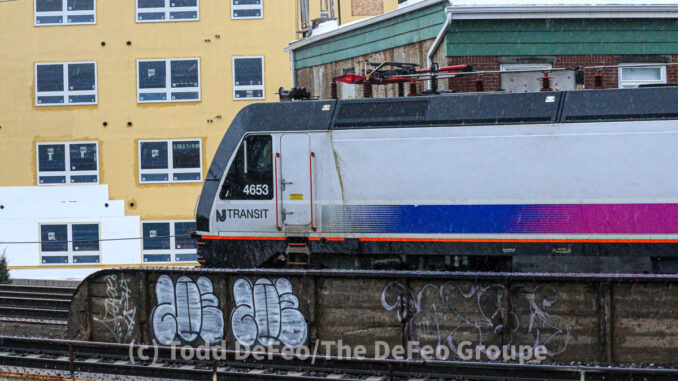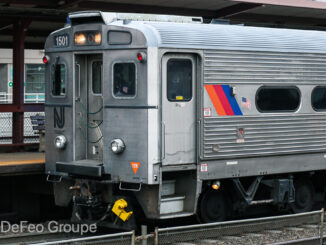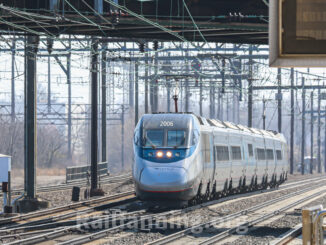
by Nikita Biryukov, New Jersey Monitor
September 17, 2025
Rising mechanical issues, a lack of available equipment, and a renewed wave of crew-related issues drove NJ Transit train cancellations this summer to their third-highest levels under Gov. Phil Murphy.
NJ Transit’s summer 2025 troubles were largely detached from Amtrak-related disruptions that stopped hundreds of trains last year and led Murphy and the heads of both transit agencies to promise changes.
There were 1,646 canceled NJ Transit trains between June 1 and Aug. 31, down from 1,811 during the same period last year, according to a New Jersey Monitor analysis of the agency’s performance data.
NJ Transit reported 634 cancellations due to mechanical issues over the three-month period, the highest number under any year since Murphy took office in 2018. This summer, they rose for the third consecutive year.
There was also a spike in cancellations due to equipment availability. At 288, those cancellations also rose to a record high under Murphy, jumping to nearly six times the level seen between June and August last year.
Cancellations due to equipment availability have been that high only during a single summer during Murphy’s two terms as governor. In 2018, 265 trains were canceled due to a lack of available equipment.
“What is happening right now is an inevitable result of years of underfunding of New Jersey Transit,” said Alex Ambrose, a policy analyst at New Jersey Policy Perspective, a left-leaning think-tank that has advocated for more robust state funding of NJ Transit.
The agency is in the process of replacing its aging train fleet. Some of the 374 new train cars the agency has ordered are due to be put into service by mid-2026, said Jim Smith, a spokesperson for the agency.
“The new cars, which include 58 self-propelled power cars, will significantly enhance service reliability … replacing the oldest and least reliable rail cars in the fleet, the 50+ year-old Arrow III cars, which are increasingly more difficult to maintain due to their advanced age and the subsequent difficulty in sourcing parts,” Smith said.
The new cars will have a mean distance between failures — a metric used to measure the reliability of rail equipment — of roughly 400,000 miles, Smith said. The mean distance between failures for July, the latest month on record, was 47,747 miles, the lowest level seen under Murphy.
The new cars are set to give NJ Transit a fully modernized fleet by 2031, Smith said.
The prospect of new equipment next year could prove cold comfort to riders facing disruptions today, said Ambrose.
“What they care about is that their form of transit is there on time and gets them where they need to go, and riders have not had that experience,” she said.
Amtrak-related cancellations, the leading source of train cancellations last summer, fell precipitously this year. NJ Transit leases tracks and related infrastructure from the quasi-public corporation for some of its rail lines, including the Northeast Corridor, the nation’s busiest commuter rail line.
Issues with Amtrak infrastructure caused just 38 train cancellations this summer, down from 527 in 2024. Smith credited Amtrak for extensive infrastructure upgrades along the lines leased by the state agency, noting Amtrak had repaired or replaced roughly 10,000 components along 240 miles of overhead wires that transmit power to trains.
Catenary wire systems were a major source of weather-related disruptions last year. Those wires can stretch and sag in extreme heat, leading to electrical failures.
“It’s clear Amtrak has prioritized the rider experience based on this and has made significant improvements where NJ Transit is still struggling,” Ambrose said.
Despite the improvements, Smith said Amtrak infrastructure continued to be a source of train delays, even if cancellations due to the corporation’s infrastructure had fallen drastically. Between June and August, 88.2% of trains arrived within 6 minutes of their scheduled arrival time. With Amtrak delays excluded, 91.2% of trains were on time.
Crew-related issues resurged as a major source of cancellations this year after falling close to zero in 2024 and 2023. A lack of available crew or engineers canceled 259 trains between June and August, up from 10 the year before and one in 2023.
A shortage of locomotive engineers was the single-largest source of NJ Transit train cancellations in the first three years of Murphy’s tenure. In each of those years, a lack of workers was responsible for cancelling more than 500 trains. In 2019, the 541 crew-related cancellations accounted for just over half of the 1,081 trains canceled that summer.
This summer’s rise in crew-related cancellations came after NJ Transit and the Brotherhood of Locomotive Engineers and Trainmen, the train engineers union, finally settled a yearslong contract dispute that led to a three-day strike by the engineers in mid-May.
That dispute was resolved before the start of June. Two-thirds of crew-related cancellations occurred in August.
NJ Transit said it still employs more than a full complement of locomotive engineers, but had experienced an uptick in unplanned engineer absences this summer.
“There were 284 unplanned engineer absences in July 2024. In July 2025, there were 484 unplanned engineer absences — that is a 70% increase,” Smith said, adding that unplanned absences in the first 18 days of this August exceeded the total unplanned absences in August 2024.
The agency on Aug. 22 sent the union a letter that directed union officials to tell their members to halt the unplanned absences, Smith said.
Tom Haas, general chairman for the NJ Transit union, said he passed the message along to his members, adding that engineers’ work hours and days increased as some went on vacation, in some cases triggering federal regulations that limit the consecutive hours and days railway engineers can work.
“When engineers are being used to work six and sometimes seven days a week, you get into situations where federal regulations require we be off for one or even two days at a time,” he said.
Those regulations could trigger unplanned absences, and such absences had sometimes been included in previous counts, Haas said, though he was unsure if the agency tallied them in this summer’s figures.
Other federal requirements that mandate engineers are familiar with the characteristics of individual rail lines — speed limits and station and signal locations, for example — also limited worker availability, Haas said.
“An individual engineer may only be qualified on, say, three or four or five of those lines, so if there’s a vacancy on another line, even if there’s an engineer who’s not working that day, he can’t be used to operate a train on that line because he’s not qualified,” Haas said.
New Jersey Monitor is part of States Newsroom, a nonprofit news network supported by grants and a coalition of donors as a 501c(3) public charity. New Jersey Monitor maintains editorial independence. Contact Editor Terrence T. McDonald for questions: info@newjerseymonitor.com.





